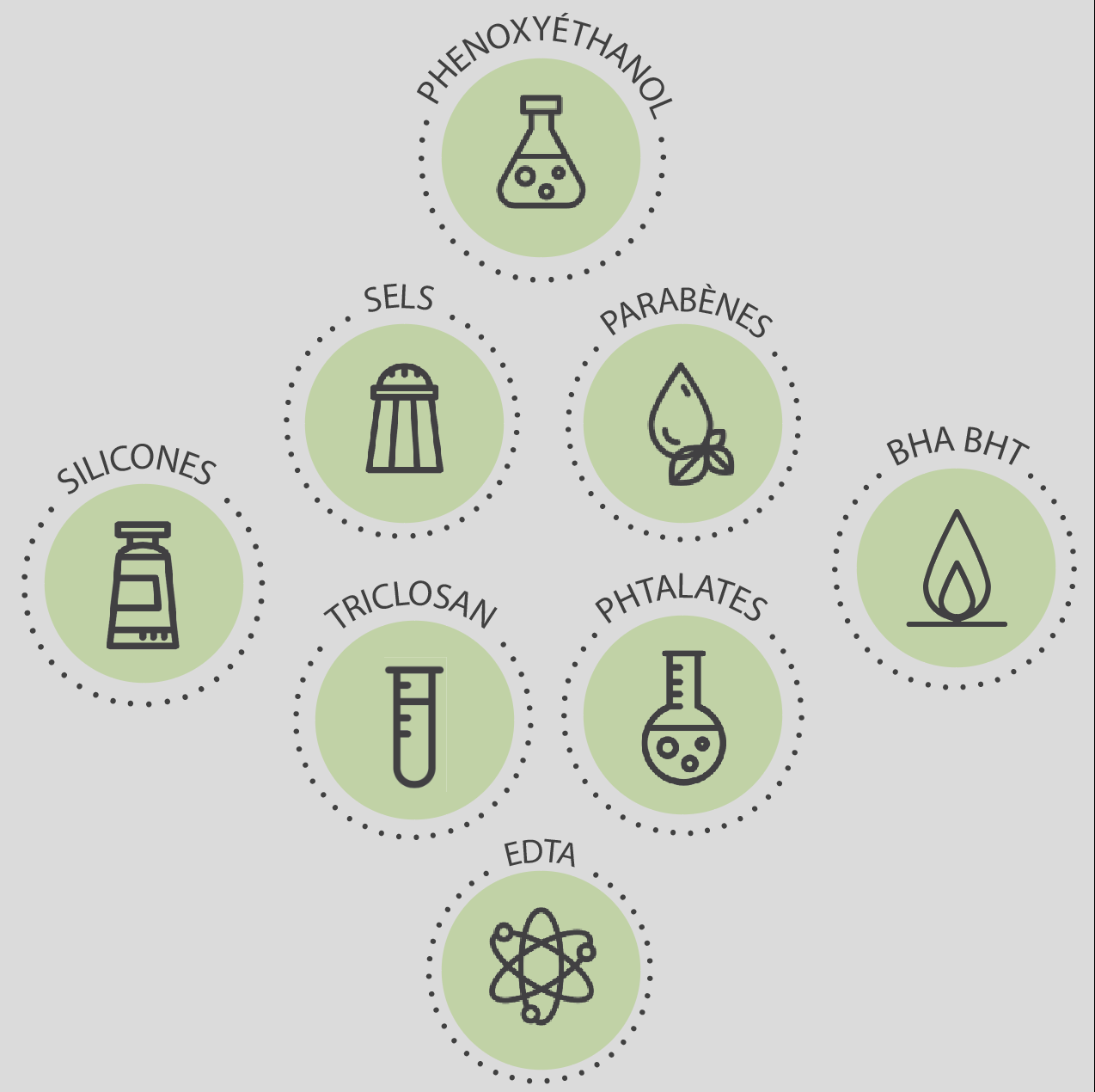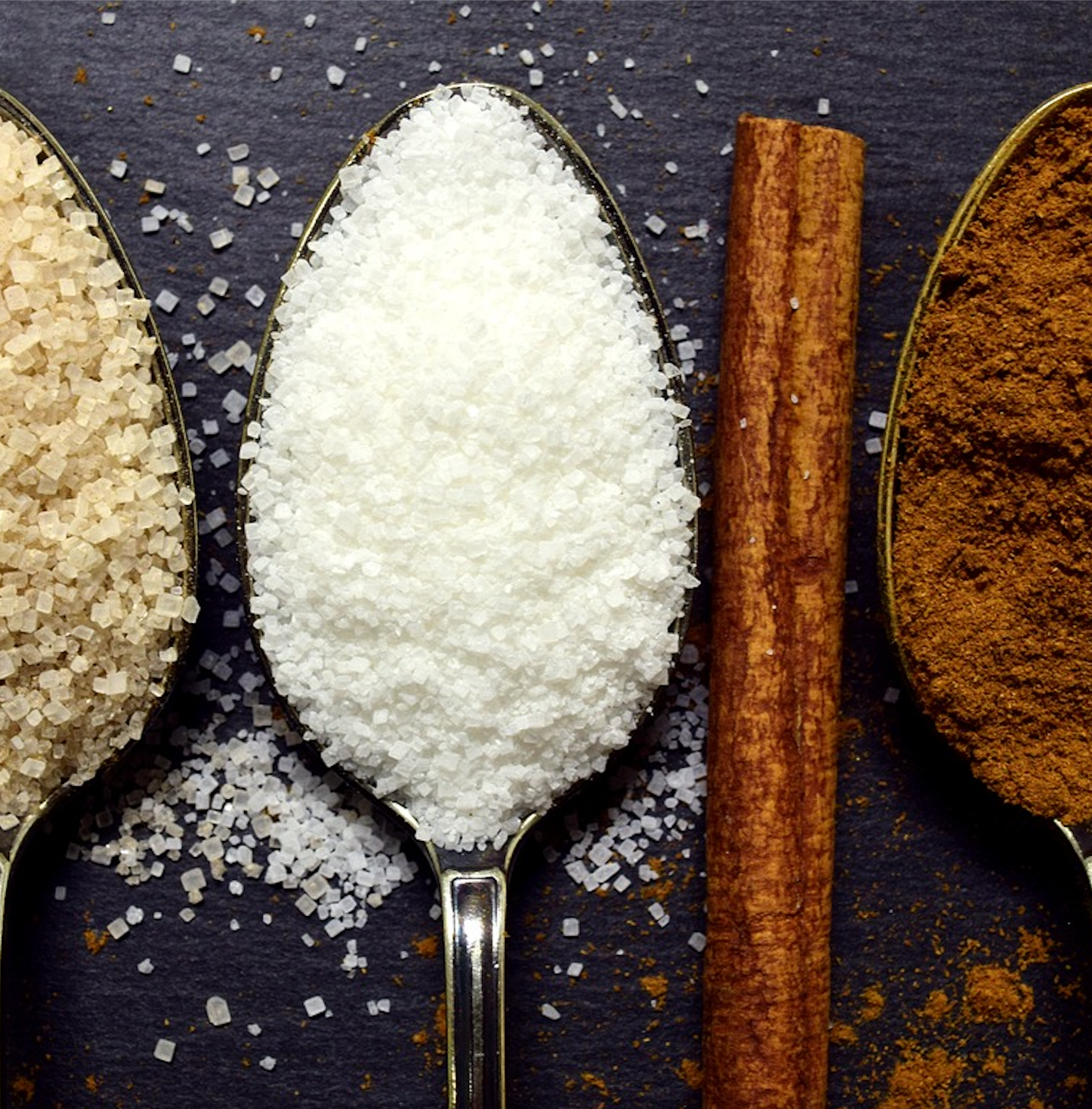
Unwanted materials - how to ban them from our cosmetics
Given the growing distrust of cosmetic components, you have probably already heard of the real or potential risks of certain so-called undesirable ingredients, skin reactions or even allergies caused by the use of a particular cosmetic product. This phenomenon more generally affects food and any other product in direct contact with our body. This is how we are, and this is normal, on the lookout for transparency or at least an explanation of cosmetic jargon in order to be able to choose our cosmetics with full knowledge of the facts and to be able to enjoy them with confidence. For our part, we have always campaigned for this transparency and are now bringing you factual insight into these so-called undesirable substances which may also be for health or ecological reasons.
Controversial health ingredients
Parabens
They make up a family in the broad sense. They are used for their antibacterial and antifungal action in cosmetics, drugs and food. They are suspected of being endocrine disruptors. In 2014, the European regulation banned five types of parabens (isopropylparaben, isobutylparaben, phenylparaben, benzylparaben and pentylparaben) and lowered the authorized concentration thresholds of butyl- and propyl- parabens in cosmetics. The European Union has banned them in infant creams.
Phenoxyethanol
It is used as a solvent and as a preservative in cosmetic products. It is suspected to be toxic to development and reproduction and the effects described relate to skin allergies and neurological disorders. A study by the National Agency for the Safety of Medicines and Health Products (ANSM), carried out in 2012, confirmed its toxic effect on the blood and the liver and estimated that, in cosmetic and hygiene products, it should be ineffective at a maximum concentration of 1% for adults and 0.4% for toddlers. However, it banned it in cosmetics intended for the seat, whether they were rinsed off or not given their frequency of use. Studies and reflections on its toxicity are continuing.
Methylisothiazolinone and Methylchloroisothiazolinone:
Many manufacturers have used these preservatives to replace parabens, but their strong allergenic potential has now been widely demonstrated. European regulations first limited their dosage and since February 12, 2017 no leave-in product containing MIT can be sold on the market.
EDTA
It is a preservative which has, in addition, the particularity of promoting the stability of cosmetic products. It is very irritating, very polluting ecologically, not easily biodegradable. It is not eliminated in sewage treatment plants and therefore ends up in rivers.
Triclosan
It is a synthetic antibacterial whose carcinogenic effect and action on hormonal imbalance is well established. Here are the INCI names on the labels: triclosan, diphenyl hydroxide ether, trichloro and carbanilide.
BHA and BHT (Butylhydroxyanisole and Butylhydroxytoluene)
These are synthetic components that are used for their powerful antioxidant and preservative power. BHA is becoming rare in cosmetic products but BHT continues to be used in particular in drugs or in foods and cosmetics which contain fatty substances to prevent rancidity.
The IARC (International Agency for Research on Cancer) has qualified BHA as potentially carcinogenic. It would also be both toxic for reproduction and endocrine disruptor. The safety of its close "relative", the BHT, could not be demonstrated for the moment, the European authorities are working on the subject. It is suspected of promoting the development of cancerous tumors, causing skin irritation and even disorders of the hormonal system.
Phthalates
They are present in several plastic products of everyday consumption because they make it possible to make them soft and flexible. In cosmetics, they act as fixing agents. Certain types of phthalates have been shown to be bad for the male reproductive system.
Ethoxylated substances
Ethoxylation is an industrial process for producing powerful surfactants or humectants from ethylene oxide which is a very reactive, extremely toxic, carcinogenic and mutagenic gas. Ethoxylated substances are therefore synthetic products that can be found in the INCI list under their names Ceteareth-20, PEG (there are more than 1000 variants), Polysorbate, Steareth-20, Sodium Laureth Sulfate (SLES), Ammonium Laureth Sulphate and most ingredients with a “-eth” ending. Just a clarification about sodium lauryl sulfate and ammonium lauryl sulfate, their irritant action on the skin is now widely demonstrated.
Titanium dioxide or titanium dioxide
Titanium dioxide is used in drugs, cosmetics, and especially sunscreens for its color changing ability and in food as an additive (E171) to increase the whiteness or shine of food. The International Agency for Research on Cancer (IARC) has classified it since 2006 as a potentially carcinogenic substance if inhaled. Its safety is increasingly controversial when it is present as nanoparticles.
Aluminum salts
Aluminum and its salts are ubiquitous in our daily lives. They are found, in fact, in industrial breast milk, in food additives and colorings, in particular for their anti-caking power, in certain common drugs and in cosmetic products such as antiperspirant deodorants, sunscreens, care products, make-up. , make-up removal, ceramics in orthopedic and dental surgery and in tap water. In high doses, its effect becomes toxic because it is no longer completely eliminated naturally through the urine or the intestinal barrier. The residue then passes through the small intestine because these aluminum crystals are infinitely smaller than micrometric particles and ends up in the blood and then in the brain where it settles and accumulates. It is therefore suspected of being the cause of certain neurodegenerative and neuromuscular diseases. You can easily spot them because their INCI name includes, among other things, the term Aluminum
Ecologically undesirable substances
Silicones
It is a family of inexpensive ingredients, derived from petrochemicals and used for their ability to promote the spreading of cream or other product on the skin as well as for the silky feel they provide to cosmetic or hair care textures. However, this silky-touch film has the effect of suffocating the skin or hair. In addition, and this is probably their major drawback, silicones are not biodegradable at all. Their presence is easy to spot because their chemical name usually ends in "-xane", "-ane", "-thicone" or "-thiconol". For example: dimethicone, cyclotertrasiloxane.
Mineral oils
Mineral oils used in cosmetology come from petrochemicals. They cover the skin with a "suffocating" film and bring it no benefit. They are very inexpensive and are therefore used for economic reasons. You can identify them by their INCI names: petrolatum, paraffinum, cera microcrystallina, ceresin, hydrogenated microcrystalline wax, hydrogenated polyisobutene, microcrystalline wax, ozokerite, polyethylene, polyisobutene, synthetic wax. Lip balm waxes can contain some, be sure to take a look.
Your questions about unwanted substances
We stop there, the list is already long enough, it certainly seems complicated to you, but occasionally go through the article and it will already be more digestible. In the meantime, do not blindly throw yourself into the claims, even organic ones, but gradually learn to track down instead the presence of these ingredients and above all do not hesitate to write to the manufacturers of your skincare products. As far as we are concerned, you will find the list of our ingredients on our website. Each product page has a detailed ingredient list. Please do not hesitate to write to us at contact@lodaites.com if necessary, we will be happy to answer your questions.


